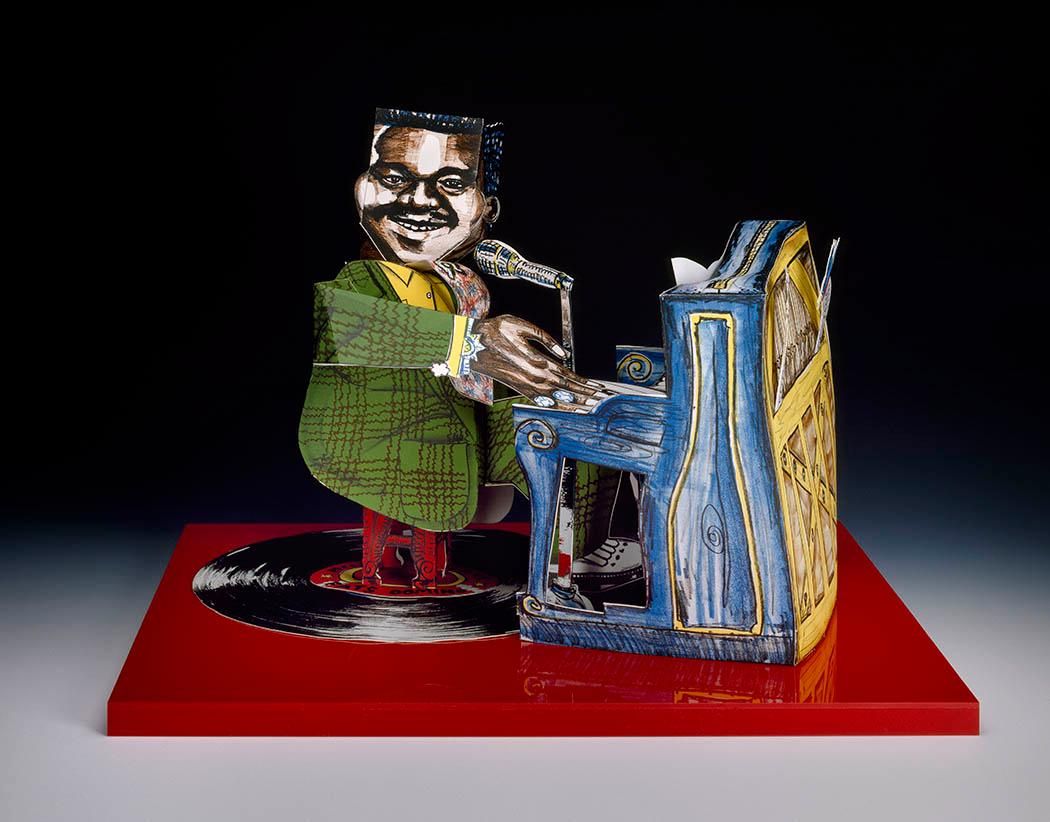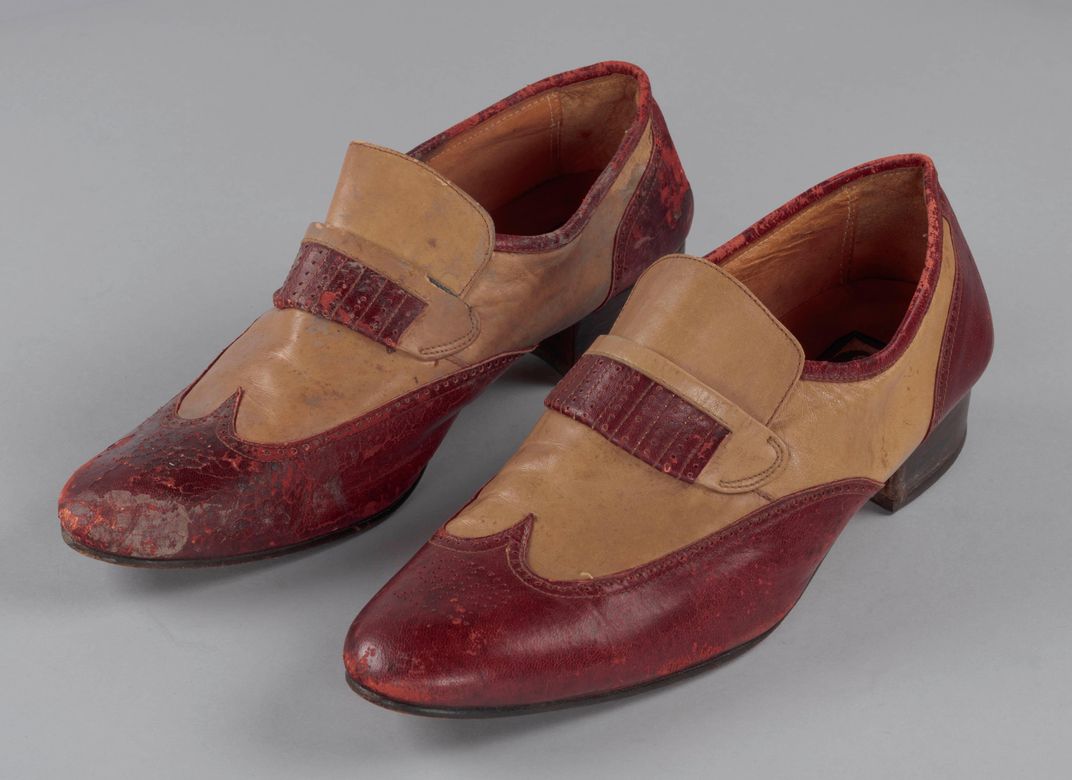Fats Domino’s Infectious Rhythms Set a Nation in Motion
This Rock ’n’ Roll maverick was a true New Orleans original
/https://tf-cmsv2-smithsonianmag-media.s3.amazonaws.com/filer/ed/b7/edb73f71-fc97-4456-922c-0c1e70515952/b6fgt8.jpg)
Squabbling over the precise origins of the worldwide cultural phenomenon called Rock ’n’ Roll has long been a favorite pastime of academic researchers and lay music lovers alike. Some say Ike Turner and his Kings of Rhythm, who in 1951 released the exuberant automotive ode “Rocket 88,” deserve credit for kicking the movement off in earnest. Others place “Rock Around the Clock” hitmaker Bill Haley, guitar lick maestro Chuck Berry, or the gyrating hips of Elvis Presley at the center of the story.
Ultimately, pinning the genius of Rock ’n’ Roll on a single individual is a fool’s errand: throughout the late 1940s and ’50s, innovators all across the country built on the foundation of African American jazz, swing and R&B, drawing inspiration from forebears and contemporaries alike and contributing distinctly to the nascent canon of classic rock. Figuring out who was the most influential of them all is hopeless, but in terms of charm, style and catchy songwriting, it is safe to say that Big Easy-born piano man Fats Domino was at the top of the class.
Born Antoine Dominique Domino, Jr. in 1928, the Louisiana Creole kid quickly fell in love with the music of his community. Steeped in an atmosphere abuzz with the improvisational spirit of jazz, the exultant dynamism of big-band swing, and the infectious rapid-fire keyboard riffs of boogie-woogie, Domino found himself compelled to get in on the action. It was the last of these styles, colored by the rich Afro-Cuban habanero dance tradition of New Orleans, that “Fats” came to master and make his own.
“A lot of what sets Fats Domino apart stems from his background,” says National Museum of African American History and Culture curator Kevin Strait, “and absorbing the music of New Orleans, and working with the musicians from the city to develop a new sound to American popular music. He really set the trend.” One key aspect of Domino’s style was his incorporation of the habanero’s naturally catchy, easily repeatable tresillo rhythm, which would anchor many of his future radio hits.
From his early teens, Domino was playing local taprooms, and before long, with the aid of music industry visionary Dave Bartholomew, the charismatic young pianist had made the big leagues. Acting on behalf of Imperial Records’ artists and repertoire division, Bartholomew formally recruited Domino in 1949, producing and co-writing with the 21-year-old a single called “The Fat Man,” adapted from Champion Jack Dupree's dark drug tune “Junker Blues” but completely different in its vibe. Domino lit a fire under Dupree's measured melody, his dancing fingers etching both unrelenting backbeat and playful incidental tinkling into the minds of all who heard. Even today, one listening can picture the artist seated at his piano bench, bowing and swaying with every note, foot tapping below.
The record skyrocketed up the R&B charts; eventually, upwards of one million copies were sold. Fats Domino had made his nationwide debut.

From this auspicious moment on, Domino had great success winning the ears and hearts of radio owners across the land. From the mellifluous, rueful lyrics of “Ain’t That A Shame” (1955)—undergirded by smooth guitar, steady percussion, and, of course, piano—to the titillating trill that opens “Blueberry Hill” (1956) to the insistent swing of “I Want to Walk You Home” (1959) to the easy repetition and intimacy of “I’m Walking to New Orleans” (1960) to the iconic up-and-down keyboard beat of “Kansas City” (1964), Domino’s output was consistently compelling, and fans were delighted to eat it all up. The tresillo rhythm he had borrowed from the Afro-Cuban music of New Orleans served him exceedingly well, Kevin Strait recalls.
“By the late 1940s,” Strait says, “Fats Domino, along with his song partner Dave Bartholomew and folks like Little Richard, came to really dominate mainstream popular music with the use of this catchy triplet rhythmic structure. It became a hallmark of their influential piano-based sound.”
This dominance was not viewed favorably by all at the time. The Smithsonian's African American History Museum holds in its collections a 1965 handbill from the white “Citizen’s Council of Greater New Orleans” exhorting readers to “help save the youth of America: DON’T BUY NEGRO RECORDS.” Many Southerners feared that the rising popularity of black musicians could imperil the racial power structures they saw as essential to their way of life. Indeed, these fears were well-founded—music like that of Fats Domino got people of every color and creed dancing together, and reminded them of their shared humanity in tumultuous times. The ascendance of Rock ’n’ Roll and that of the Civil Rights Movement went hand in hand.

One longtime admirer of Domino’s is Nashville-born pop artist Red Grooms, who, reflecting fondly on the days he spent listening to pioneer rock in his art studio decades prior, felt moved in 1984 to whip up a light-hearted, brightly colored paper sculpture in the musician’s honor. The piece, now in the collections of the National Portrait Gallery, is a pert portrayal of Domino, who is shown seated at a flashy blue piano sporting a loud green jacket and yellow dress shirt. Meeting the viewer’s gaze, Fats wears a mischievous smile, and his piano bench sits atop a larger-than-life vinyl record. For a man who welcomed music into every aspect of his existence, it seems a fitting portrayal.
Later in life, an elderly Domino would weather the ravages of Hurricane Katrina, airlifted to the Superdome from his flooded home in the Lower Ninth Ward. A pair of natty two-tone loafers salvaged from his waterlogged residence now belongs to the African American History Museum, and by extension, the American people, perpetual reminders of a long-embattled city’s indefatigable spirit in the face of adversity, and humble vestiges of a true New Orleans original.
Though Fats Domino passed away earlier this week at the age of 89, the impact he had on the landscape of global music, and on the lives of African Americans looking to be seen as equals in their own country, is immortal. In the rumbling piano and warm, enveloping vocals of his songs, we are all privileged to be lost.
/https://tf-cmsv2-smithsonianmag-media.s3.amazonaws.com/accounts/headshot/DSC_02399_copy.jpg)


/https://tf-cmsv2-smithsonianmag-media.s3.amazonaws.com/accounts/headshot/DSC_02399_copy.jpg)